Testing the Wilson AG Pro Quint, and hello Shakespeare Anywhere cell boosters
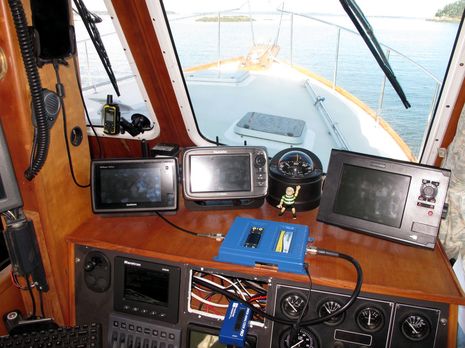 The test scene is admittedly messy, but having the Wilson AG Pro Quint cell booster out at the helm made it easier to read and photograph. I could also monitor the screen on the Medusa Power Analyzer that the 12v feed is running through (the Quint pulled about 11 watts with two of its amps turned up to about 70db and the other two at about 50 and 55). The best part, though, is how real the testing was. Gizmo is anchored in a wicked cell hole that also happens to be beautiful (mapped here via the test DeLorme InReach SE mounted to the windshield) and only about 11 miles from Camden. Heck, a Verizon call with my wife failed abruptedly about two miles from the anchorage and I couldn’t even get a text out!
The test scene is admittedly messy, but having the Wilson AG Pro Quint cell booster out at the helm made it easier to read and photograph. I could also monitor the screen on the Medusa Power Analyzer that the 12v feed is running through (the Quint pulled about 11 watts with two of its amps turned up to about 70db and the other two at about 50 and 55). The best part, though, is how real the testing was. Gizmo is anchored in a wicked cell hole that also happens to be beautiful (mapped here via the test DeLorme InReach SE mounted to the windshield) and only about 11 miles from Camden. Heck, a Verizon call with my wife failed abruptedly about two miles from the anchorage and I couldn’t even get a text out!
Let me tell you more about the test install. In the top photo you can see the thick (and relatively inexpensive) Wilson LMR 400 coax cable that connects the booster to the outside omnidirectional Wilson Marine Antenna that I bench tested last winter. The antenna is now mounted on Gizmo’s spreader (as described here in March) and the super low-loss cable was a lot easier to run than I anticipated; while it bends smoothly, it also goes where you push it. I’ve tried all three of the interior antennas I mentioned in the bench test entry, and the one I’ve settled on is Wilson’s Panel model, which is facing down on the floor of the flybridge electronics cabinet that’s directly above the lower helm area. That way its directional radiation path is aimed at all of Gizmo’s current cell devices — the Maretron SMS100 just visible behind the Garmin 741, the Siren Marine Sprite mounted behind the cable column, and my Nexus Galaxy phone, whether it’s in the cradle or anywhere in the vicinity.
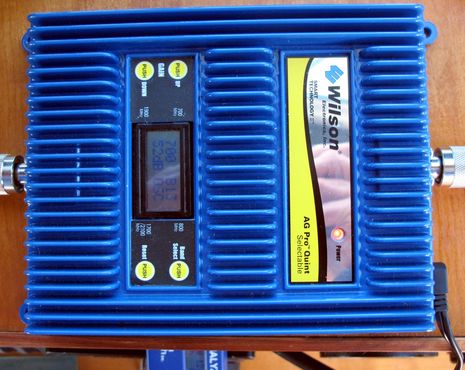 So, how did the Quint do? Well, expectations should be high for a booster that costs over $800 and is designed to help mulitiple cell devices in a large building, and the Quint is a monster booster indeed. I’ve now tested it in many difficult cell locations along the Maine coast and elsewhere, and I don’t think it’s ever failed to increase my phone’s perceived signal strength noticably, if not significantly. At this Barred Island anchorage — where I could only see a bar or two of Verizon coverage and only get voice calls and texts through sporadically — the Quint made those normal phone operations work just fine.
So, how did the Quint do? Well, expectations should be high for a booster that costs over $800 and is designed to help mulitiple cell devices in a large building, and the Quint is a monster booster indeed. I’ve now tested it in many difficult cell locations along the Maine coast and elsewhere, and I don’t think it’s ever failed to increase my phone’s perceived signal strength noticably, if not significantly. At this Barred Island anchorage — where I could only see a bar or two of Verizon coverage and only get voice calls and texts through sporadically — the Quint made those normal phone operations work just fine.
But what’s especially impressive is how well the Quint handles the twin bugaboos of cell tower overload and inside/outside antenna oscillation. In either case the device instantly stops amplifying the specific problem frequency, shows the red trouble LED, and sets up the little screen to both explain the issue and fix it. In the photo above (click on it for larger), the Quint has seen OSCillation (feedback) between Gizmo’s two antennas on the (Verizon flavor) 700 MHz band, and now all I have to do is push the Gain Down button to fix it. The same thing happens if the Quint senses that it’s overloading a cell tower, and that’s fixed just as easily. I’ve found that setting each gain two or three dB below the warning will usually avoid further shutdowns, and of course, you can turn unused frequencies to the minimum, but expect to tweak your desired frequencies every time you move the boat. The four maximum dB settings that worked fine in this anchorage all had to be reduced considerably when I got back to Camden. (Incidentally, the Quint gets its name because it can amplify both the 700 B12 (AT&T LTE) and 700 B13 (Verizon LTE) bands, though you have to choose which).
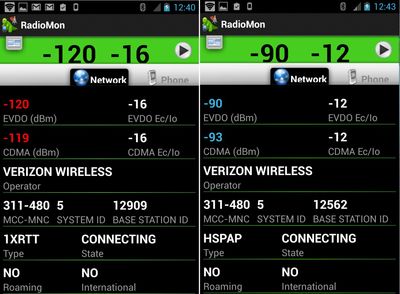 However, what’s unfortunately less predictable about the AG Pro Quint–and maybe any of the many new boosters aimed at data users in general and 4G lovers specifically– is actual data improvements. For instance, in the Barred Islands just a few miles from Verizon LTE 4G fast data heaven, even the mighty Quint couldn’t bridge the gap. And though it improved the available 1xRTT data signal substantially — and sometimes even got the connection up to HSPAP (3G) — I spent the night without my phone able to serve as a decent WiFi hotspot, which for me is primary goal of this whole boosting excercise. I’ve also seen a number of 3G situations where the Quint would definitely improve the signal, but the phone would also start shutting down the data connection frequently. (Perhaps because noise on the connection was also amplified, which displeased the tower?)
However, what’s unfortunately less predictable about the AG Pro Quint–and maybe any of the many new boosters aimed at data users in general and 4G lovers specifically– is actual data improvements. For instance, in the Barred Islands just a few miles from Verizon LTE 4G fast data heaven, even the mighty Quint couldn’t bridge the gap. And though it improved the available 1xRTT data signal substantially — and sometimes even got the connection up to HSPAP (3G) — I spent the night without my phone able to serve as a decent WiFi hotspot, which for me is primary goal of this whole boosting excercise. I’ve also seen a number of 3G situations where the Quint would definitely improve the signal, but the phone would also start shutting down the data connection frequently. (Perhaps because noise on the connection was also amplified, which displeased the tower?)
But let me emphasize the phrase “less predictable”; I have gotten some great data connections with a Wilson boost, and they’ve helped me do what I like to do on the boat, be it taking care of Panbo, surfing the news, or streaming NetFlix. But while I suspect that the AG Pro Quint is very current in a fast moving technology, I also suspect that boosting fast cell data is tricky business and would caution all to keep their expectations in check.
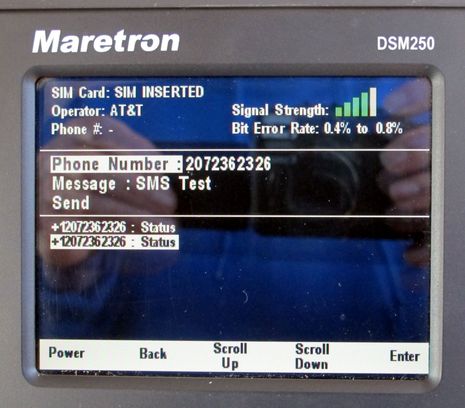 There are also certain places where cellular is downright mysterious and Camden Harbor happens to be one of them in terms of normally pervasive SMS messaging. I first saw this with a Cobra C Pod alarming and tracking system, which may be a great product, but which I couldn’t test because its AT&T GSM Sim card wouldn’t work here at all, even though AT&T phones do. I saw the same weird phenomenon with the first Siren Marine product I tested, but Siren came up, analyzed the situation, and eventually switched to a T-Mobile card that’s been working well here and elsewhere ever since. That’s why I wasn’t too surprised when an AT&T card wouldn’t work in the Maretron SMS100, and why I purchased a T-Mobile prepaid card, too. Well, get this–at the Barred Island anchorage both cards worked fine in both directions with Wilson Quint assistance (two bars went to four or five), but here in Camden the SMS100 with T-Mobile card can only send test messages and receive Status commands; it won’t reply or send alarms. This may be an odd Maretron DSM issue (they’re investigating), but very local SMS anomalies may be at work, too.
There are also certain places where cellular is downright mysterious and Camden Harbor happens to be one of them in terms of normally pervasive SMS messaging. I first saw this with a Cobra C Pod alarming and tracking system, which may be a great product, but which I couldn’t test because its AT&T GSM Sim card wouldn’t work here at all, even though AT&T phones do. I saw the same weird phenomenon with the first Siren Marine product I tested, but Siren came up, analyzed the situation, and eventually switched to a T-Mobile card that’s been working well here and elsewhere ever since. That’s why I wasn’t too surprised when an AT&T card wouldn’t work in the Maretron SMS100, and why I purchased a T-Mobile prepaid card, too. Well, get this–at the Barred Island anchorage both cards worked fine in both directions with Wilson Quint assistance (two bars went to four or five), but here in Camden the SMS100 with T-Mobile card can only send test messages and receive Status commands; it won’t reply or send alarms. This may be an odd Maretron DSM issue (they’re investigating), but very local SMS anomalies may be at work, too.
Meanwhile, at last month’s NMEA Conference, Shakespeare debuted a new line of Anywhere Voice and Data Cellular booster kits. So far, the only one listed online is the basic CA-VAT kit seen below, but it looks pretty good if you’re willing to go without 4G boosting. Instead of trying to reinvent the wheel, Shakespeare has partnered with SureCall so the kit includes the former’s marine cell antennas and the latter’s Cellphone-Mate booster technology. Add in Shakespeare’s wide distribution in the boating world plus its relationships with many electronics installers, and I’d say that Wilson is going to have a harder time entering this market than it might have a year ago. But it’s going to be a good competition for us cell-hungry cruisers. At NMEA Shakespeare was handing out data sheets for several booster kits with 4G abilities, and I’ll guess that Wilson will be out with a model that is as easy to maximize as the AG Pro Quint, but without the high price (and perhaps the extreme 75 dB power gain that’s not very useful on a medium size boat). Gizmo probably won’t get out to the Barred Islands cell hole and beyond until April or May, but I’ll bet there will be more testing to do.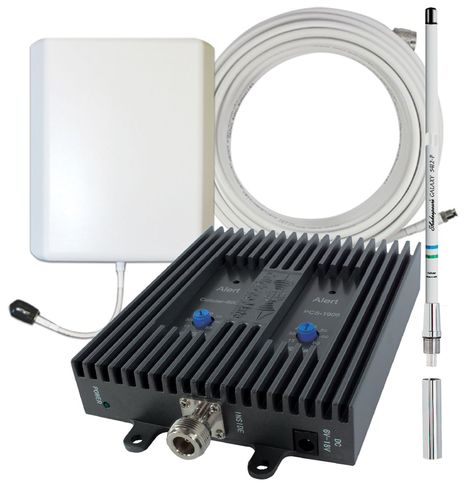



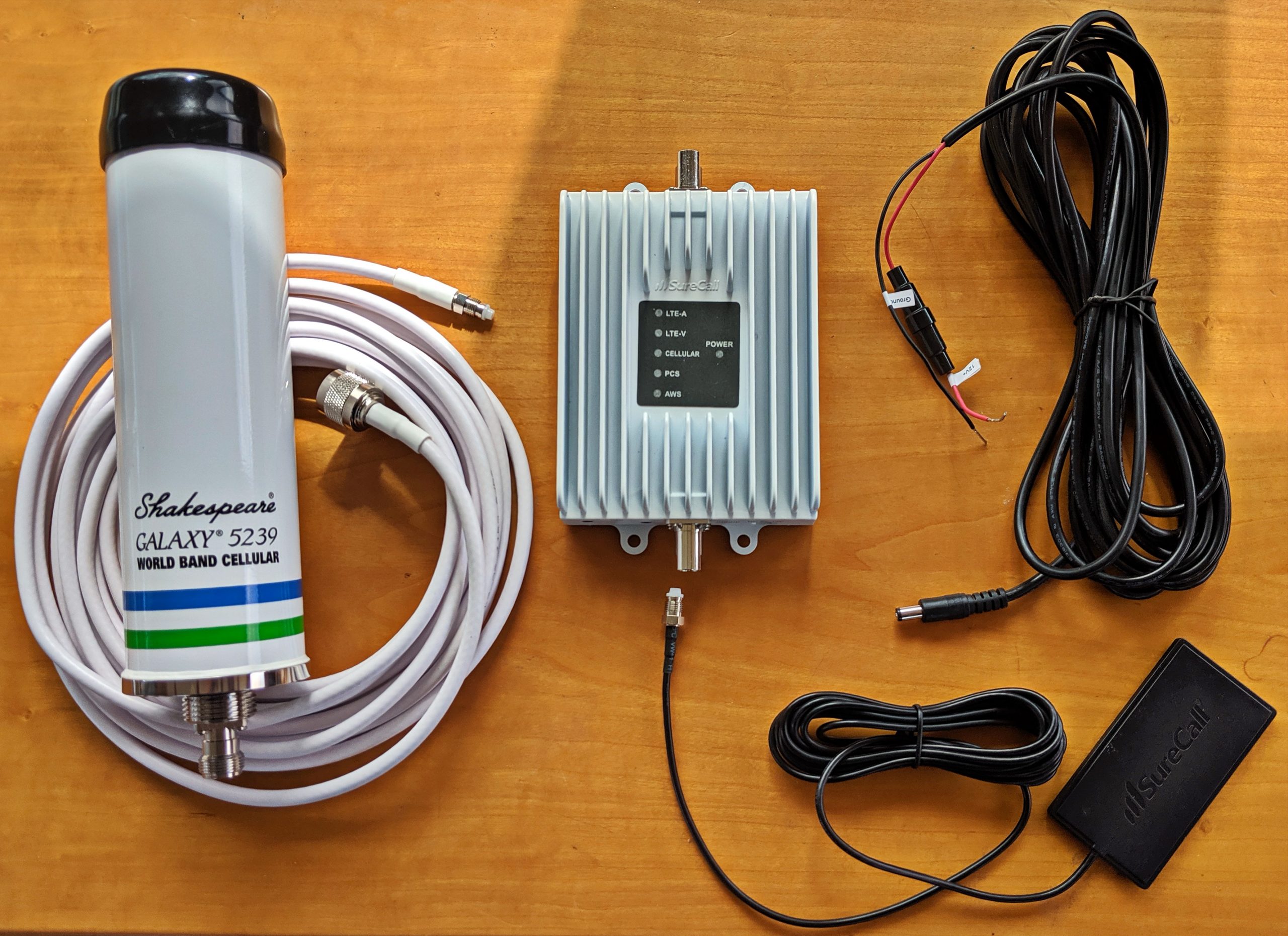
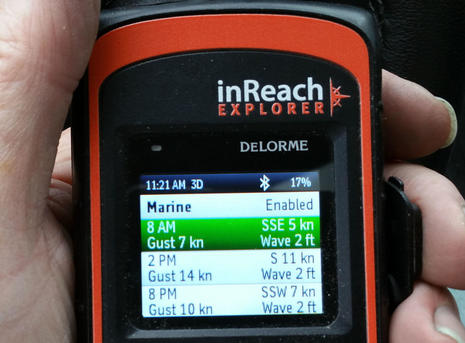
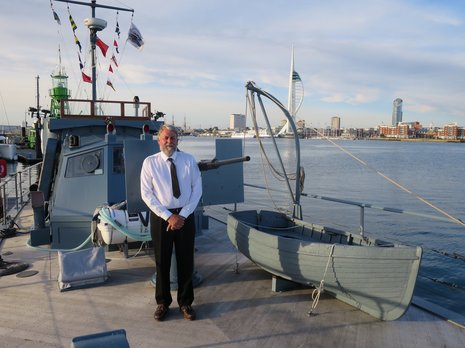







Ben,
That Wilson is very interesting. We have run a Wilson on our boat for a number of years and it certainly can boost cell calls from the poor cell holes here in Maine. We have had it pay for itself in a rare family emergency where it was literally a “save the day” piece of equipment. Without the Wilson we could not make a cell call at all. With the amp turned on we got our call out and it never dropped. Where it fails is in data, which is what I really want & need it for.
Our amp is older and does not have gain adjustments though I often wish it did. It does claim 3G support however.
One thing we notice is that with the amp turned off I can get 4G off and on in some locations. When 4G works it is fast. When I turn on the amp it seems to force the phone to 1X for data. I know our amp does not do 4G, and will do 3G, but it is very frustrating that it seems to force us into a 1X connection more often than to boost the 3G signal.
For voice our Wilson is a decent tool, but I don’t consider it a panacea. For data it really does nothing except to slow us down and most often force us into 1X rather than 3G. Wilson has not been able to help or explain why this happens.
When I know there is 3G or 4G I usually get all Rube Goldberg on my phone. I do this by raising it in a small ditty bag up the main halyard to increase 4G reception. That $3.00 bag outperforms our Wilson for data hands down…
I raise it up the halyard until my wifi signal in the cabin is starting to fade. At that height I often get great data performance even from some real Maine cell holes….. Next year I plan to go gourmet Rube and treat my phone to a waterproof ditty bag for when it is raining..
Please let us know when Wilson gets the data thing sorted out. For now I’ll just send the phone up the stick in a bag if I want data.
-RC Collins
Compass Marine Inc.
Great stuff, RC, but do you realize how much you’re spending to have that tall antenna mast on your boat? Not to mention all the sail schlepping required to commission and decommission. I’ve been watching a lot of that from the cozy comfort of Gizmo’s solar heated and powered (and on deck) cabin 😉
As for “save the day” communications, I’ve got to put in a good word for the DeLorme inReach SE. The original model worked great but the SE gives the device a ton more standalone functionality at very little extra cost.
Also, it was funny to mention the inReach today and immediately get some pr about two free months of service Holiday promotion if an inReach user activates in Nov. or Dec. The page needs updating but here’s the link:
http://inreachdelorme.com/holiday/
Also the inReach web map link I put in the entry just shows where I was when I did this testing and sent an inReach message about it. Here’s what the sharemap looks like (if you want it to):
https://share.delorme.com/BenEllisonPanbo
Ben,
Did you put your lightning arrester up by the antenna (I don’t see it by the QUINT input)?
I’ve had the QUINT in a butler building for the summer where it works great. Will be taking it with us this winter using a masthead antenna.
All the best!
Don
The “anywhere” labels from both Wilson and Shakespeare are very US-centric. 850, 1800, and 2100 MHz bands outside the US are tough to come by in an integrated product. For those that travel far afield today the solution seems to be a US system and an international one switched separately.
RC,
I work for Wilson Electronics, and I wanted to let you know that what you are experiencing is not normal for our products. Would you please send me an email at [email protected] so I can further look into the issues you are having? I would love to get this fixed for you so that you can enjoy our products to their fullest potential! 🙂
Thanks
Fast moving technology! The Wilson 803470 AG Pro-Quint Selectable booster I tested in this entry has already been replaced with 803670 AG Pro Quint:
http://www.wilsonelectronics.com/store/display/242/47/ag-pro-quint
The difference is that the new model can work with both AT&T and Verizon 4G at once, no selection needed. The new model also lost the LCD screen, though unfortunately not the high price tag.
Of course this has to happen. Wouldn’t it be nice to be able to update the 803470? Any chance Wilson would be amenable?
Cheers
Just received word that its both a hardware and firmware change and updating the 803470 isn’t an option.
If you want a 2 or 3 Watt cell booster now’s the time. There will be some interesting new boosters coming out as the new FCC rules take effect — and I hope to test a couple — but this is from a reliable source:
“FCC Booster Rules after May 1, 2014:
(D) Power Limits. A booster’s uplink power must not exceed 1 watt composite conducted power and equivalent isotropic radiated power (EIRP) for each band of operation. Composite downlink power shall not exceed 0.05 watt (17 dBm) conducted and EIRP for each band of operation.
After May 1st there will not be any approved 3 watts or high powered systems manufactured or sold by Sure Call, Shakespeare, Wilson or Digital Antenna.
The new guidelines do not affect the systems already sold prior to the May 1st deadline; these systems WILL be allowed to operate under a grandfather clause. No amplifier manufacturing can sell 3 watt boosters in the USA past May 1, 2014.
If someone wants/needs a high powered system now is the time to purchase inventory.”
Ben,
Just an update. There was an issue with my Wilson amp (Mobile Wireless Dual Band)and it finally died altogether in June. For a long while it would hone in and boost 1X signals but did not want to lock in on 3G?? Wilson had no answer for this behavior.
Unfortunately it was older and well out of warranty by the time I realized it was malfunctioning. On my Dual Band amp everything appeared to be working but no gains could be detected, even on 1X, when it finally went. Wilson was very good with trouble shooting and support but the amp was a gonner. It lasted about 4 years which is really too short for this type of product, at least in my opinion….
Wilson had no idea what caused this amp to die, other than to say “this sometimes happens”….
I have installed quite a few of these and mine has been the only one with any issues.
What do I have now?? The new replacement, the Wilson “Mobile 4G”, which has 4G capability, is nothing short of amazing (compared to the old amp). I am seeing far better gains than I ever saw with my older Wilson Dual Band.
I was very, very skeptical because the power on newer amps is considerably less (FCC changes) but I am seeing -30 to -43 dBm gains regularly and it holds and locks in 4G when it is available. There are areas that without the phone on I am barely getting a 3G or 1X signal, PAINFULLY SLOW..! I can flip on the amp and in 30 seconds or so I am downloading & uploading over 4G with speed and ease. The dBm gains really mean little to me, what really matters is that it actually works, in the real world. So far, darn impressive.
I have paired the new 4G amp with my Wilson marine antenna, LMR-400 cable and all the crazy adapters required to make it all work. Wilson REALLY, REALLY needs to work on the number of adapters Type N to FME to SMA… The new Mobile 4G is an SMA on the amp end not FME like it used to be, Wilson claims this was driven by the FCC????? Regardless of the who or why, it is CRAZY!!!! I suppose if it were not for all the silly adapters I might get close to -50 dBm…. (grin)
So far, two thumbs up for the new Mobile 4G amp. I will let you know on reliability in a few years….
The nice thing about the Mobile 4G is that one amp does all carriers, something the older versions did not. I can now stock one amp for installs…
While I am far from happy with the life of my first amp I chalk it up to a random event/$hit happens/Murphy etc… The new amp is working really well and is exceeding my expectations despite the FCC stepping in on the industry…
RC Collins
Compass Marine Inc.
Thanks, RC! I didn’t even realize that Wilson had come out with the Mobile 4G and it looks right for a lot of boat situations:
http://www.wilsonelectronics.com/store/display/245/38/mobile-4g
Dare I ask if your combination of antenna, cable, and amp meet the new FCC rules? Also, how are you connecting phone to amp, and did you register the amp?
Meanwhile I just got a Wilson Sleek 4G cradle booster to test
http://www.wilsonelectronics.com/store/display/236/43/sleek-4g
I should be able to try it with the Wilson marine antenna and also the Digital Antenna 1285 wideband bullet, which is supposed to be excellent with 700 MHZ LTE:
http://www.digitalantenna.com/prods/cellantenna_wideband_bullet_deckmount.html
I believe that Digital is very close to having a 4G quad band booster approved by the FCC. Shakespeare already seems to have a 4G wireless solution but it’s carrier specific:
http://shakespeare-marine.com/halo-ca-v-ca-or-ca-t-2g3g4g-cellular-booster-kit
Ben,
Posting this from deep in Perry Creek. No service at all with the amp OFF, 4G with the amp ON… 4G speed at Perry Creek is nice….
4G in Perry Creek is really nice, especially when those massive squadrons of Perry C. mosquitoes are on the blood hunt 😉
For readers from away, Perry Creek is on the NW corner of Vinalhaven, only about 11 miles from Panbo HQ in Camden, as the crow flies. But it’s a lot further in terms of cell service. With all our topography and a relatively thin population, cell holes are major and multiple, but they do exist elsewhere. RC and I just happen to cruise in an area that’s excellent for testing cell boosters.